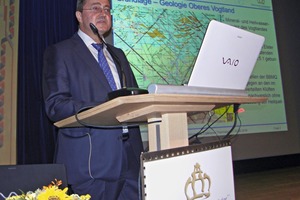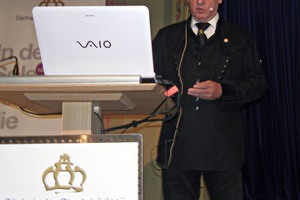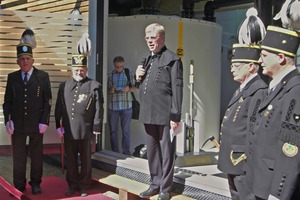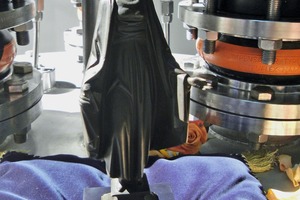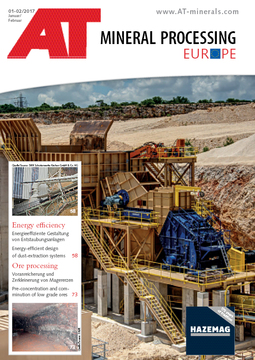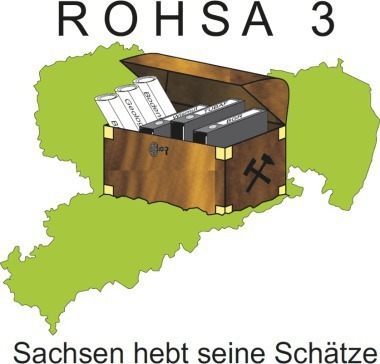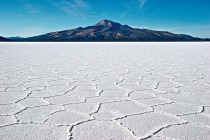Spadework of German Scientists and Engineers in Bad Elster
About 170 guests followed the invitation of the Sächsische Staatsbäder GmbH to attend the 1st Technical Symposium in Bad Elster on August 26, 2016. They came to gather information on the exploration, exploitation, chemistry and health effects of the geothermal saltwater spring and to take part in its solemn consecration.
The Saxony State Ministry of Finance commissioned exploration drillings for geothermal beds already in 2006. In 2007, the exploration area was determined, however due to the low mappable depth, seismic instead of geoelectric explorations had to be carried out. The exploration drillings began with a flush drilling process down to 1200 m with an end pipe diameter of 216 mm (sealing pipe 340 mm Ø up to 400 m GOK). In his presentation, Dr.-Ing. Thomas Daffner, Managing Director of the Umweltbüro Vogtland GmbH, Weischlitz, reported on numerous difficulties in connection with both drilling and production of the saltwater, such as crystallization and gas and material eruptions. The problems could partly be solved by means of an air-lift system, but the low extraction rate and the high energy consumption pose new challenges to the engineers. Many constructive measures as well as tests of several materials were necessary before the material handling system could be successfully installed. On 18.09.2015, the thermal saltwater spa was inaugurated - a technical building that, again, proved to be true that “A miner’s work is not a one-man-show”, as Dr. Daffner ended his speech entitled “The thermal saltwater Spring of Bad Elster - from exploration to production.”
Previously, Saxony’s State Minister of Finance and former Vice Chancellor of the TU Bergakademie Freiberg, Prof. Dr.-Ing. Georg Unland, stated in his very informative lecture on “The saltwater spring of Bad Elster – a natural resource with growth potential for the Vogtland” that water was our most valuable resource. He explained both the hydrothermal systems and the geological processes as well as the current geological situation in the Saxon-Bohemian spa triangle. Finally, the Minister showed the growth potentials arising from the development of the saltwater, which should also boost the economic growth of the region.
Another lecture dealt with the chemistry and the genesis of the saltwater spring of Bad Elster. The lecturer, Prof. Dr. rer. nat. Broder J. Merkel from the TU Bergakademie Freiberg explained the chemism prevailing in the hypersaline saltwater of Bad Elster and highlighted the special features of the unique and unrivalled saltwater in an international context. The saltwater evolving from a primal ocean is a mixture of 1.5 million year old water and glacial water (27 to 37 thousand years old). The thermal water shows a very high concentration of sodium sulfate (Glauber’s salt source ~ 57 % NaHSO4’, ~ 37 % SO4‘‘) and non-ionic species, such as CaSO4 and MgSO4, as well as an extremely high content of trace elements (Zr, Hf, Cs, Tr, Li, Ge, Cu and other SE). Since it is a fossil source without regeneration (estimated useful life: at most 50 years), careful and sustainable use of this natural resource is required.
The healthy effect of the saltwater produced with a salt content of 22 % and a temperature of 42 °C was explained by Prof. Dr. med. habil. Karl-Ludwig Resch, Managing Director of the German Institute for Health Research gGmbH, Bad Elster.
The culmination of the symposium was the solemn inauguration of the Bad Elster saltwater well house, which was entrusted to Saint Barbara, the patron saint of the miners. “Better safe than sorry” could have been the motto of Saxony’s State Minister Prof. Unland, who on behalf of the State Government donated a mini statue of the saint and had to realize that the figurine was already hanging on the wall of the well house. Besides the ecumenical consecration, a parade of several miners in dress uniform and the joint singing of the Steigerlied provides the ceremony with another festive aspect.
Autorin/Author: Dr. Brigitte Hoffmann, Consulting Kreislaufwirtschaft/Umweltschutz, Oberschöna

